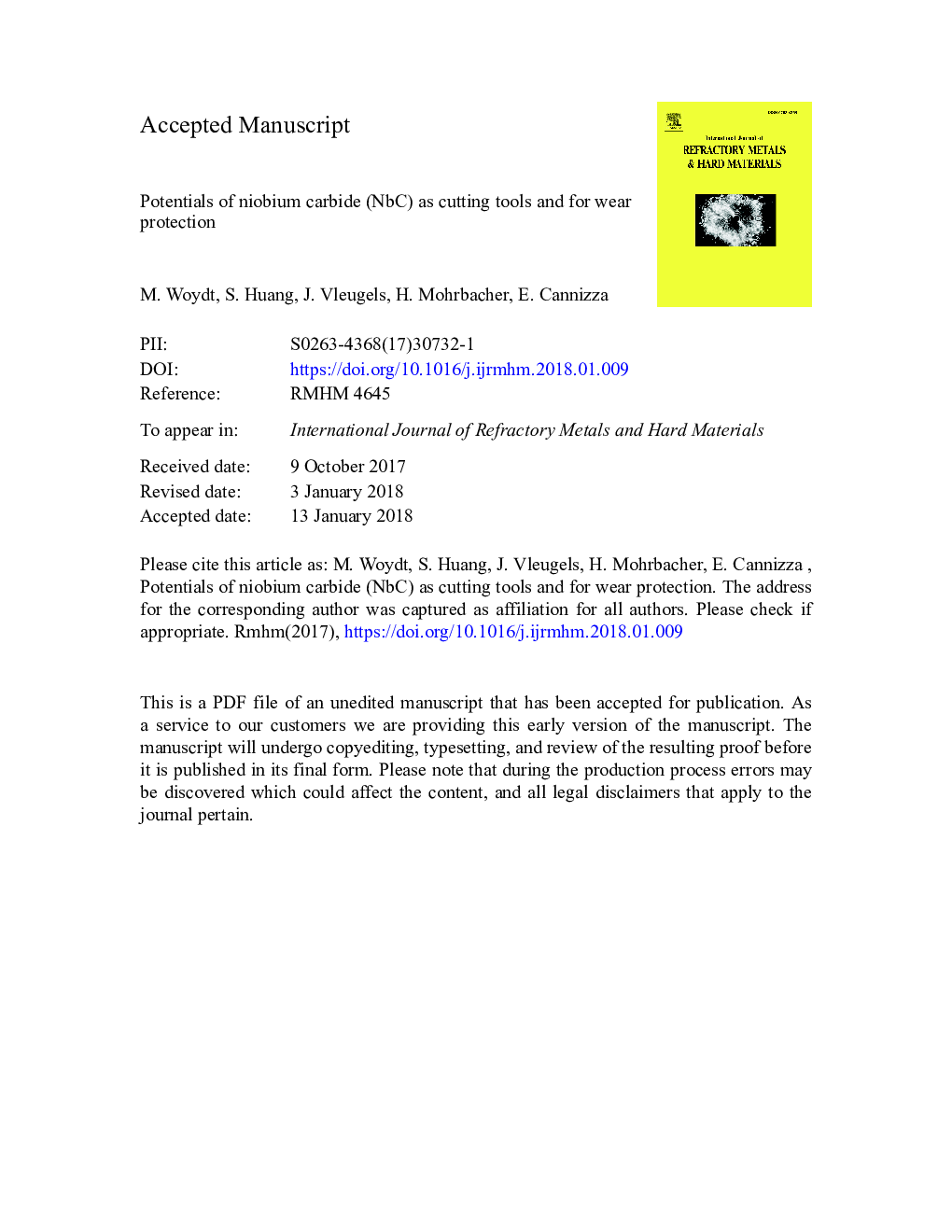| Article ID | Journal | Published Year | Pages | File Type |
|---|---|---|---|---|
| 7989886 | International Journal of Refractory Metals and Hard Materials | 2018 | 16 Pages |
Abstract
Apart by vacancies, the different pseudo-cubic phases NbC, Nb4C3 and Nb6C5, can accommodate any stoichiometry of NbCx (0.75â¯â¤â¯xâ¯â¤â¯1.0) in the binary phase diagram and enable a large process window. Properties, like micro-hardness, hot hardness, sliding wear resistance, elastic modulus and toughness can be tailored by the C/Nb ratio, the addition of secondary carbides and the type of binder. SPS sintered and cobalt bonded (NbC0.88-12Co SPS). NbC and Nb2O5 have so far no REACH classifications related to human toxicology and are not listed as substances of very high concern contrary to Co3O4. The NiMo-bonded stoichiometric NbC1.0 grades enable the substitution of cobalt by nickel, SPS by conventional sintering and NbC0.88 by NbC1.0 in view of functional properties. Nickel bonded NbC grades have improved toughness versus cobalt bonded NbC grades, but loosed in hardness. NiMo and NiMo2C bonded NbC1.0 grades in combination with secondary carbides compensated the loss in hardness while keeping the toughness. The tool lifes of uncoated NbC1.0-12Ni4Mo4VC and NbC0.88-12Co under dry turning of 42CrMo4 and C45E were between +30% to +200% higher and up compared to WC-6Co (extra fine grain). Niobium is today largely available as resource. NbC grades displayed lower dry sliding friction over WC grades. The softer Ni- and NiMo-bonded NbC1.0-grades have a higher dry abrasive wear resistance (ASTM G65), even with lower toughnesses, as the tougher WC-Co grades.
Related Topics
Physical Sciences and Engineering
Materials Science
Metals and Alloys
Authors
M. Woydt, S. Huang, J. Vleugels, H. Mohrbacher, E. Cannizza,
